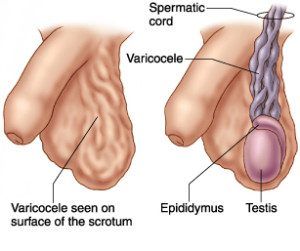healthcare

June 11,2025 • 3 min read
Varicocele Surgery Guide: Recovery Time, Risks, and Results

Introduction
Varicocele is a medical condition where veins inside the scrotum become enlarged, leading to symptoms like discomfort, scrotal swelling, and even male infertility. While not always dangerous, varicocele can affect the quality of life and reproductive health for many men. When symptoms persist or fertility is affected, surgery may be the most effective treatment option.
In this Varicocele Surgery Guide: Recovery Time, Risks, and Results, we’ll take a detailed look at why varicocele surgery is done, the different methods available, what recovery looks like, and how it can affect your overall health and fertility.
What Is a Varicocele?
A varicocele is similar to varicose veins, but it occurs in the scrotum, typically above the testicles. It’s caused by malfunctioning valves in the veins that prevent proper blood flow, leading to pooling of blood and swelling of the veins. It usually develops during puberty and may gradually enlarge over time.
Common Symptoms of Varicocele:
-
Dull or sharp pain in the scrotum
-
Visible or palpable enlarged veins ("bag of worms" feeling)
-
Swelling or heaviness in the testicles
-
Reduced sperm quality or quantity
-
Testicular atrophy (shrinkage)
Not every man with varicocele needs treatment. However, if the condition causes discomfort, affects testicle size, or leads to fertility problems, surgery is often recommended.
Types of Varicocele Surgery
There are three main surgical approaches to treat varicocele. Your surgeon will suggest the best option based on your symptoms, fertility goals, and overall health.
1. Microsurgical Varicocelectomy
This is the most precise and widely recommended technique. The surgeon uses a high-powered microscope to carefully tie off the dilated veins while avoiding nearby arteries and lymphatic vessels.
Pros:
-
Low recurrence rate
-
Faster recovery
-
Minimal complications
Cons:
-
Requires a skilled, experienced surgeon
-
Slightly longer surgery time
2. Laparoscopic Surgery
This method uses small abdominal incisions and a camera to locate and seal the problematic veins.
Pros:
-
Minimally invasive
-
Faster procedure time
Cons:
-
Slightly higher complication rate than microsurgery
-
Requires general anesthesia
3. Percutaneous Embolization
This is a non-surgical, outpatient procedure. A radiologist inserts a catheter into a vein and uses coils or a solution to block off the affected varicocele veins.
Pros:
-
No surgical incisions
-
Shorter recovery time
Cons:
-
Not suitable for all cases
-
Higher chance of recurrence in some patients
-
Mild to moderate pain and swelling
-
Use of ice packs for relief
-
Pain medications as prescribed
Week 1:
-
Avoid heavy lifting, straining, or bending
-
Gentle walking is encouraged
-
Return to light work or desk jobs in 2–4 days
Weeks 2–4:
-
Gradual increase in daily activities
-
Avoid strenuous workouts or sexual activity
Weeks 4–6:
-
Resume normal activities, including gym and sports
-
Swelling and discomfort should be mostly gone
3 Months Onward:
-
Improvement in sperm count, motility, and hormone levels
-
Follow-up semen analysis to evaluate fertility progress
Conclusion
Varicocele surgery is a well-established and effective treatment for men experiencing discomfort, reduced fertility, or other complications due to enlarged scrotal veins. With modern surgical techniques and experienced hands, recovery is usually smooth and results are promising.By understanding the Varicocele Surgery Guide: Recovery Time, Risks, and Results, you're now equipped to make an informed decision about your health and future. Whether you're seeking relief from pain or aiming to improve fertility, surgery could be a significant step forward.
flowcare Details
User Profile
- Full name
- flowcare
- Email address
- seo@flowcare.co.in
- Join Date
- 2025-06-11
- State
- City
- Pincode
- Address
- Follow us on Facebook
- Follow us on Twitter
- Website Name
- Bio